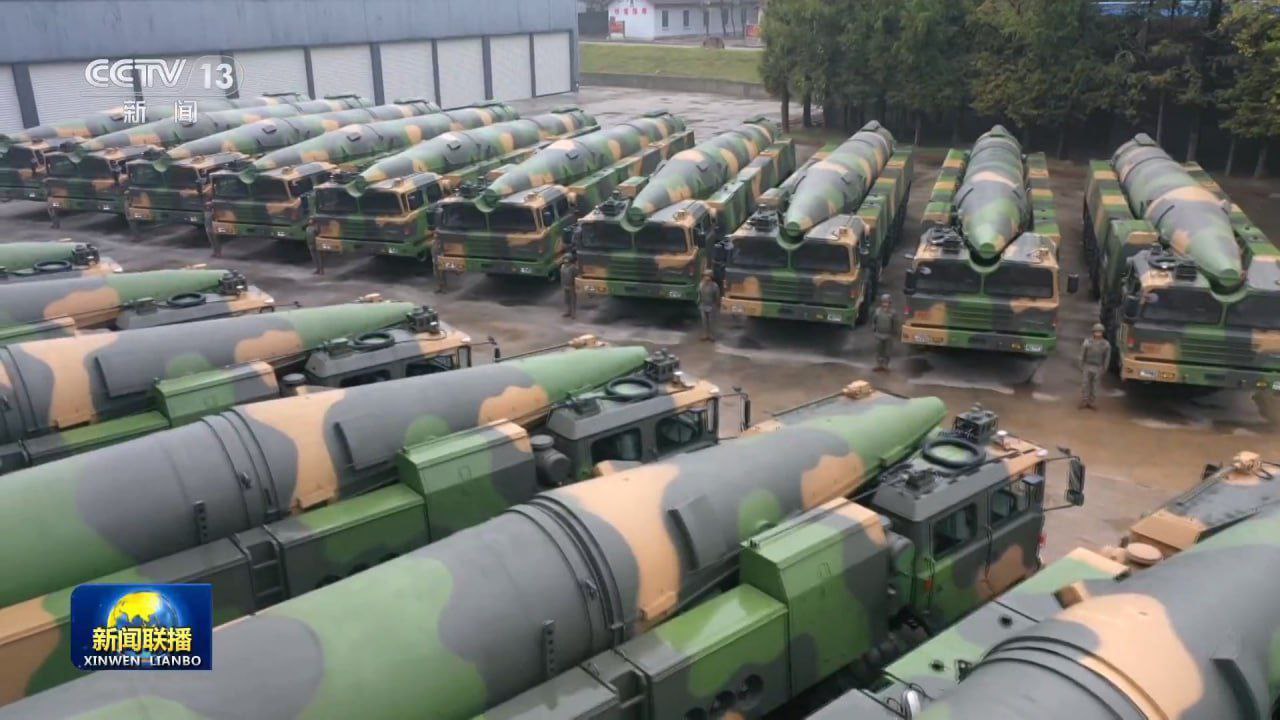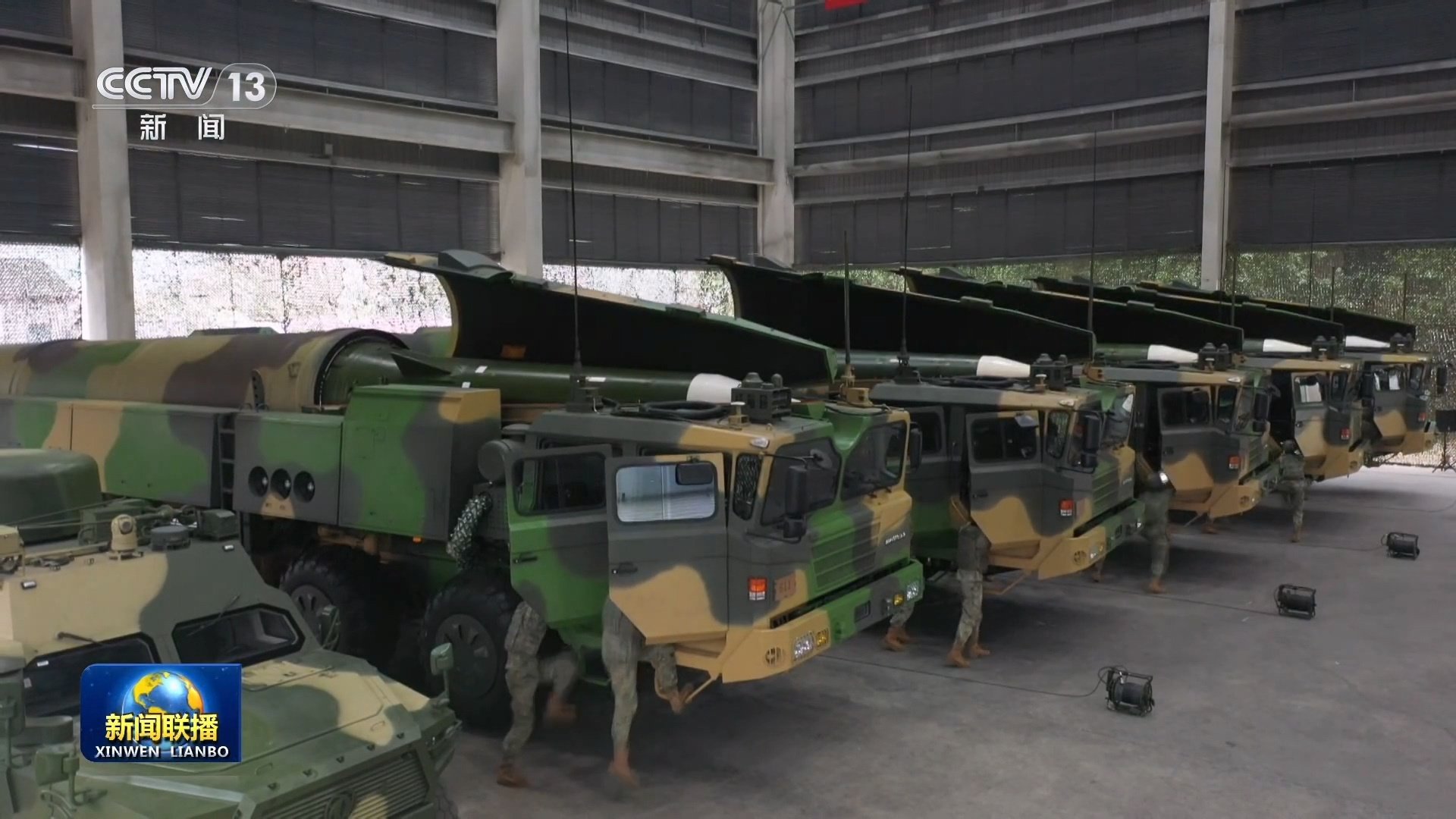China’s stockpile of DF-26 intermediate-range ballistic missiles (IRBMs) has grown substantially, with new satellite imagery capturing nearly 60 new launchers at a prominent Beijing-based production site.
A synthetic aperture radar (SAR) image taken on September 9, 2024, by Umbra, reveals 59 DF-26 transporter-erector-launchers (TELs) stationed in a newly developed staging area at the Beijing Xinghang Electromechanical Equipment Factory, according to an analysis from Janes.
Reports based on commercial imagery from 2023 to 2024 indicate the factory has assembled at least 72 DF-26 TELs since the previous deliveries to the People’s Liberation Army Rocket Force (PLARF) in 2020–21.
The newly produced TELs could support up to two fully equipped 36-TEL brigades, significantly bolstering China’s missile force.
This increase reflects China’s commitment to bolstering its intermediate-range ballistic missile forces, which are a concern for the United States and its allies in the Indo-Pacific.
These findings are consistent with a recent US report, “Nuclear Challenges: The Growing Capabilities of Strategic Competitors and Regional Rivals,” which notes that the PLA Rocket Force continues to expand its stockpile of road-mobile DF-26 intermediate-range ballistic missiles.
These missiles are capable of executing nuclear and conventional precision strikes on ground targets and conventional strikes on naval targets.
The US Department of Defense (DoD) also noted in its 2023 China Military Power Report, covering developments up to the end of 2022, that the People’s Liberation Army Rocket Force (PLARF) has consistently grown its DF-26 inventory, with an estimated 250 IRBM launchers in service at the time.
The Federation of American Scientists (FAS) has suggested that this DoD figure likely includes TELs observed at the Beijing facility.
However, SAR and other monthly imagery data from 2022 indicated relatively minimal visible DF-26 assembly activity until recent months, leading to questions about the extent of active deployment versus storage or handling.
Janes’ analysis, supported by satellite imagery and handheld photography, indicates that at least seven PLARF brigades are equipped with the DF-26 IRBM. These include units stationed across strategic locations from Jianshui to Korla, underscoring China’s deployment strategy aimed at regional coverage.
However, analysts are uncertain whether the new TELs will supplement existing DF-26 brigades to reach full operational strength or replace older DF-21 systems within China’s missile force structure.
DF-26: Guam Express
The DF-26 missile, also dubbed the “Guam Express,” has recently garnered significant attention following a high-profile inspection by Chinese President Xi Jinping of a People’s Liberation Army Rocket Force unit in Anhui province on October 17.

First showcased during China’s 2015 parade marking the end of World War II, the DF-26 missile has rapidly emerged as one of the more formidable assets in China’s arsenal.
This missile system, capable of quickly swapping between conventional and nuclear warheads, is designed for precision strikes on both land and naval targets. The DF-26, manufactured by the China Aerospace Science and Technology Corporation (CASC), has a range exceeding 3,100 miles.
This extensive range positions it as a strategic asset capable of targeting critical US military installations throughout the Indo-Pacific, including key bases on Guam, which is why it has earned its moniker.

The implications of the DF-26’s dual capability—engaging both ground and naval targets—are particularly alarming for American defense strategists. In a potential conflict, the US would heavily rely on its aircraft carrier fleet, supported by Carrier Strike Groups, to project power in the region.
However, the DF-26’s ability to switch its targeting focus poses a significant threat, particularly to the highly valued aircraft carriers that symbolize US naval superiority.
While some experts express skepticism about the DF-26’s effectiveness, suggesting it may have been exaggerated in its perceived threat, the Chinese military’s commitment to expanding the stockpile indicates a serious belief in the missile’s capabilities.
Should China be concentrating on expanding its DF-26 stockpile, as the latest report suggests, it could shed light on the strategic intentions of the People’s Liberation Army Rocket Force (PLARF) in the event of a conflict.
Former US Navy submarine commander Tom Shugart highlighted the strategic calculus involved: “Without doubt, in a war at sea, the PLA, if it had the inventory to do so, would be perfectly happy to trade a missile (or several), costing perhaps in the order of US$20 million each, for a destroyer that would cost billions to replace.”
- Contact the author at ashishmichel(at)gmail.com
- Follow EurAsian Times on Google News




